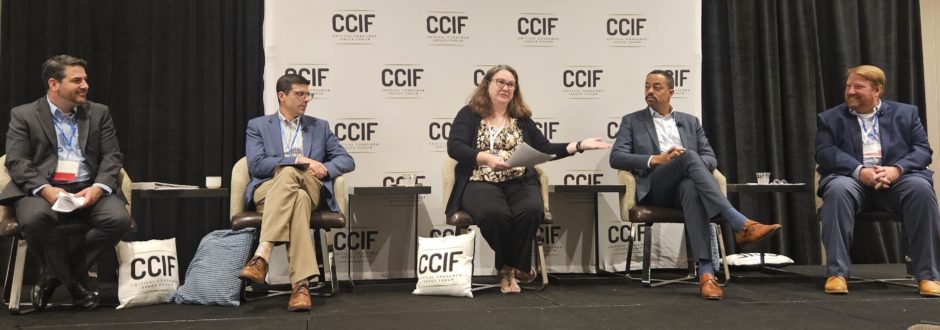At its 7th Annual Kickoff Forum on November 12, 2016, in La Quinta, California, CCIF began a dialogue on smart communities (more commonly called “smart cities” as further explained below. See the 2016 CCIF Kickoff Forum agenda here.
Following a series of summits covering these issues in early 2017, CCIF issued a report entitled Connecting Communities: Smart Cities, Enabling Technologies, and the Grid. The report recognized that a growing number of communities across the country are busy planning and implementing a range of projects to make their communities smarter – more connected, data-driven, inclusive, mobile, sustainable, and resilient – ultimately, more livable. While there appears to be no universally accepted definition, the catchy “smart city” label is used to describe a wide variety of initiatives that simply are aimed at improving community life using digital technology.[1]
In fact, the “smart city” concept is not limited to cities. Such efforts are underway in areas as small as a neighborhood and as large as a state. Therefore, this report deliberately uses the broader term “smart community” or “connected community” with exceptions as warranted. Smart initiatives vary not only in size, but also in strategy and approach. In any case, they share a common emphasis on benefitting communities and solving real-world problems.
CCIF’s concentration on smart communities recognizes the importance of this paradigm shift and its increasing relevance to the three core groups – state utility regulators, consumer advocates, and energy company representatives – for which CCIF discussions are focused. As highlighted in the report, many smart community projects are already underway, and community leaders are reaching out to regulated energy companies to achieve many of their objectives in a more collaborative and “unconventional” manner. Therefore, the three core groups need to be aware of these initiatives and prepared for two distinct types of roles. First, they will continue to fulfill their traditional adjudicatory and oversight roles concerning any smart community projects that necessitate regulatory approval. Second, these groups have the potential to collaborate, advise, or partner with smart communities in ways that could result in long-term benefits for all customers regardless of their exact location.
The CCIF process afforded participants an opportunity to directly engage with a number of city representatives and other smart community experts about their initiatives, motivations, lessons learned, and the value of the three core groups’ awareness and potential involvement. Among many takeaways from these exchanges, CCIF participants learned that they have been dealing with smart community issues (such as energy-efficiency upgrades for low-income neighborhoods, resiliency planning, advanced metering infrastructure, weatherization, electric vehicle charging infrastructure, etc.) for some time. Therefore, while “smart community” is not easily defined, it is also not overly complicated and offers opportunities that are worth exploring (e.g., using infrastructure more efficiently).
By conveying what CCIF participants learned from experts over the past year, the report attempts to clarify the somewhat amorphous “smart community” concept, to focus on areas of particular relevance to the three core groups, and to identify potential roles with respect to smart initiatives. As with our prior publications, CCIF trusts that the valuable perspectives reflected within prove instrumental as we build upon these ideas through further constructive dialogue between CCIF participants; leaders at the local, state, and federal levels; and the broader stakeholder community.
CCIF’s final report on smart communities, issued in July 2017, may be downloaded here.
[1] Jesse Berst, Smart Cities Council, as featured in What Is a Smart City? by Sophie Quinton, STATELINE, April 26, 2016. http://www.pewtrusts.org/en/research-and-analysis/blogs/stateline/2016/04/26/what-is-a-smart-city
